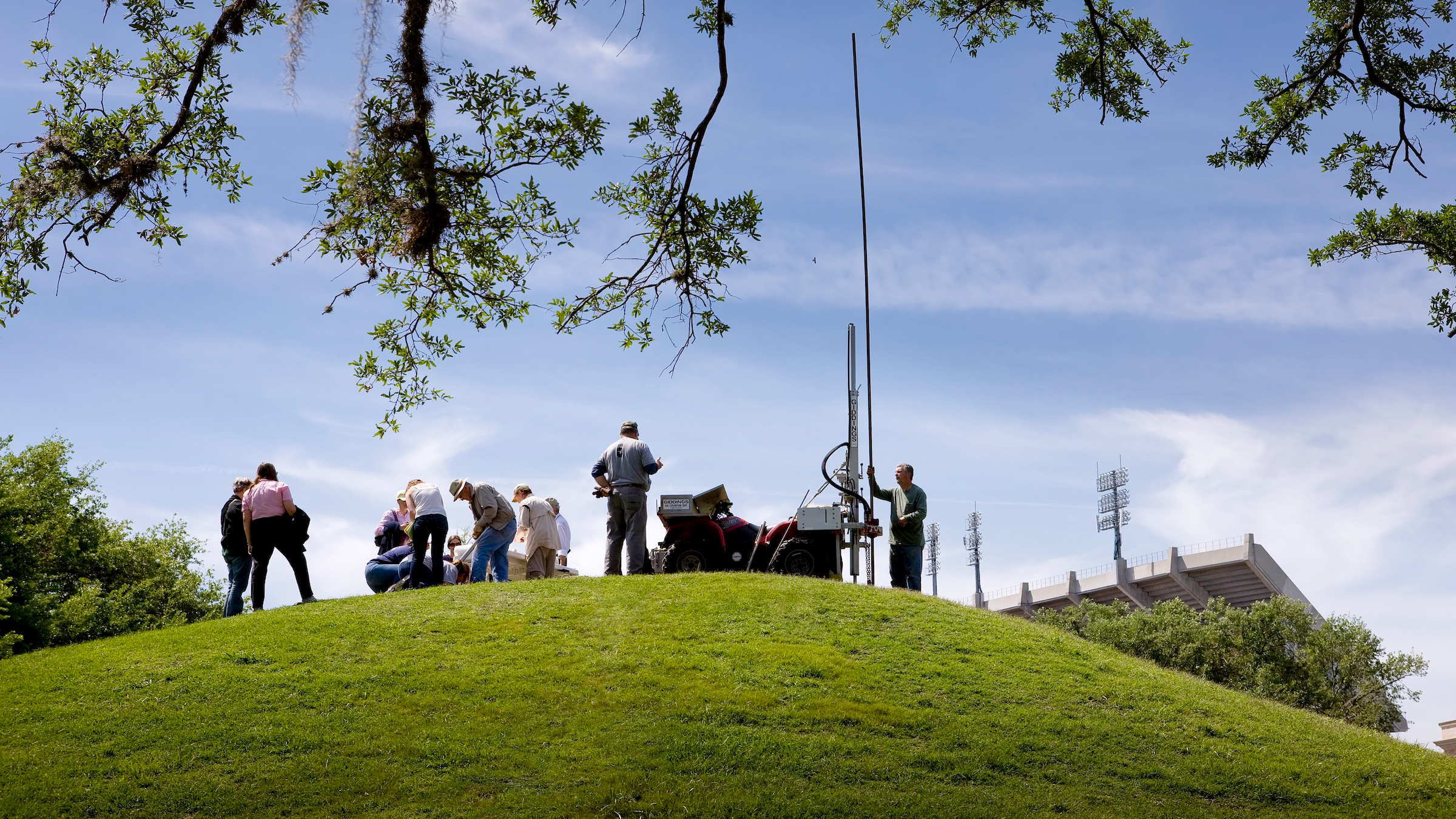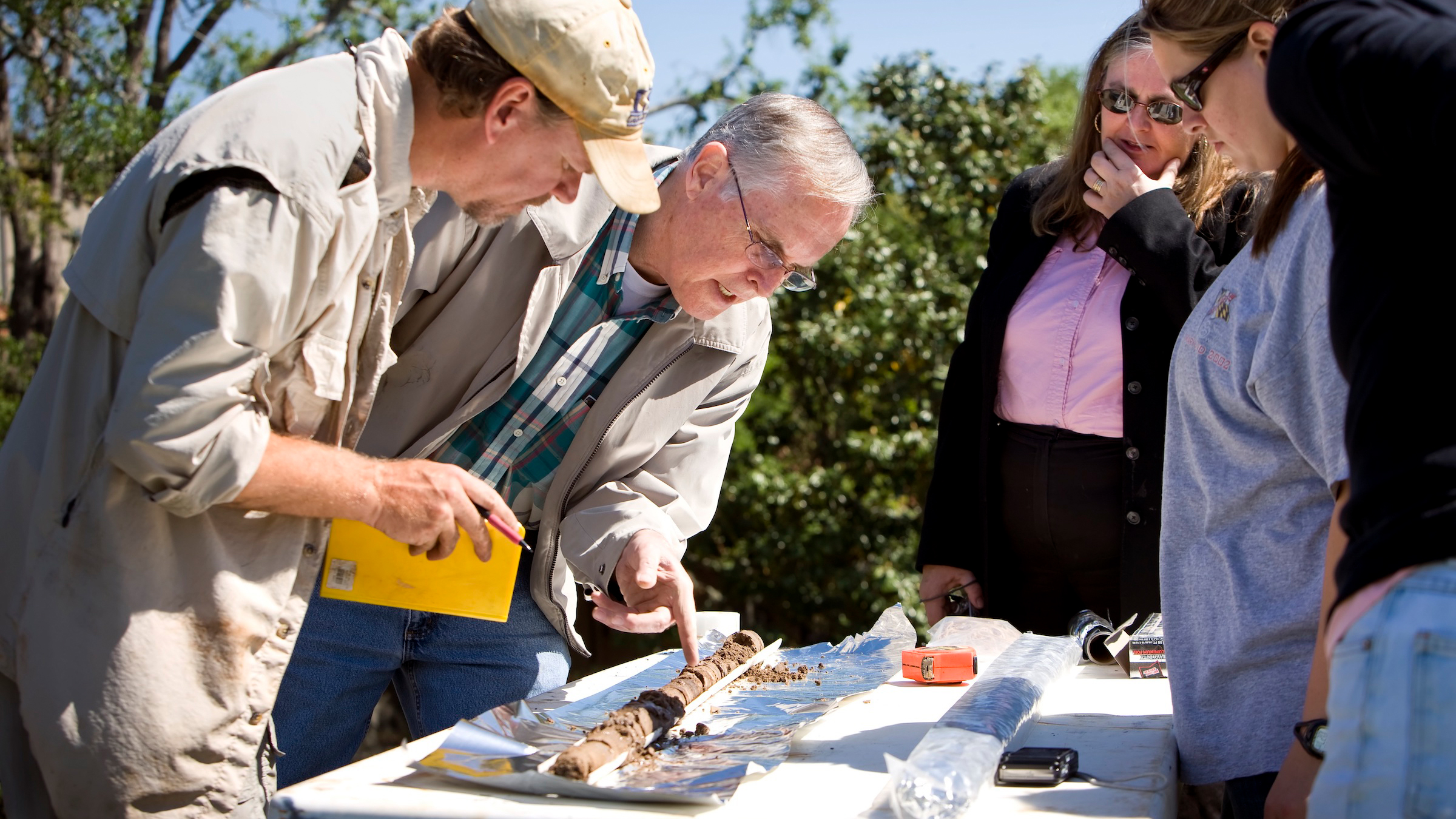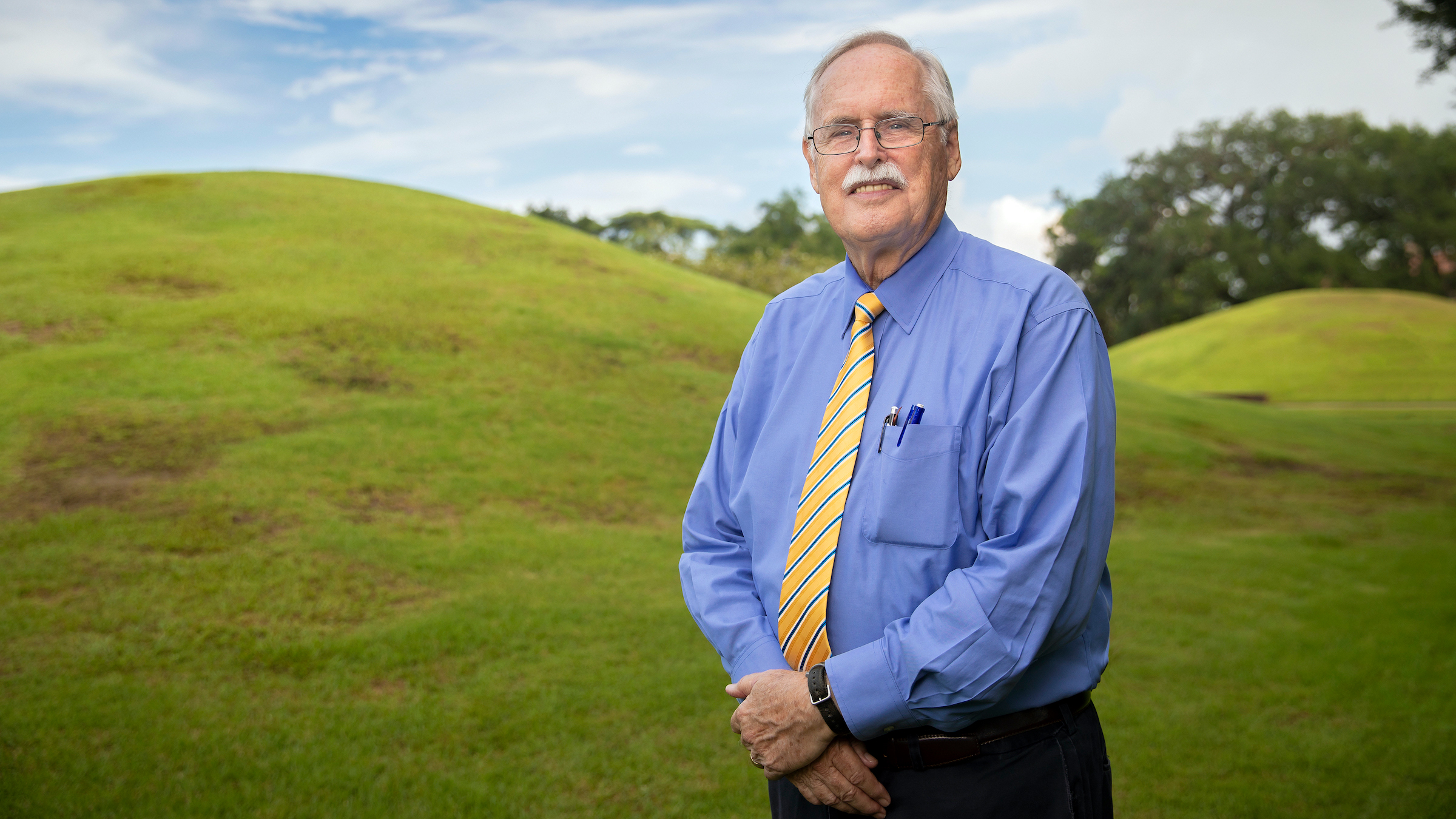Oldest human-made structure in the Americas is older than the Egyptian pyramids
The grass-covered mounds represent 11,000 years of human history.

To find the oldest known human-made structures in the Americas, you don't need to hike into the wilderness or paddle down a raging river — all you need to do is visit Baton Rouge, Louisiana.
At the north end of Louisiana State University's (LSU) campus sit two grassy mounds, rising in a gentle slope to a height of about 20 feet (6 meters). The mounds are just two of more than 800 similar human-made mounds in Louisiana, built by Indigenous Americans. Although researchers knew they were old, a new study has determined just how old these ancient structures are.
The grassy surface hides layers of ancient clay, dirt and ash. And researchers recently found that the oldest mound is 11,000 years old, making it the oldest human-made structure discovered in either North or South America.
"There's nothing known that is man-made and this old still in existence today in the Americas, except the mounds," study first author Brooks Ellwood, emeritus professor of geology and at LSU, said in a university statement. The research was published in the June issue of Yale University's American Journal of Science.
Related: Cherokee wrote backward messages in cave to speak to the spirit world
History of the mounds
For the study, the researchers took sediment cores from each of the mounds to determine their age. In these cores, the researchers found layers of clay and ash from burned reed and cane plants, as well as microscopic animal bone fragments.
Because the flames from reed and cane are too hot to cook food with, the researchers think that the mounds were built up and used for religious or ceremonial purposes.
Sign up for the Live Science daily newsletter now
Get the world’s most fascinating discoveries delivered straight to your inbox.

The two mounds aren't the same age. Mound B, which lies to the south of Mound A, is the oldest of the two. Using radiocarbon dating, which measures how much of the radioactive isotope carbon-14 has decayed in organic matter, the researchers determined that Mound B is 11,000 years old, while Mound A is around 7,500 years old. The finding reveals that both mounds are older than the ancient Egyptian pyramids; the oldest pyramid, the Step Pyramid of Djoser, was constructed at Saqqara about 4,700 years ago.
By studying the cores and the surrounding landscape, the researchers built a general timeline for the mounds' construction. A large depression in the ground near LSU's Hill Memorial Library hinted that Mound B was probably constructed from material in that area starting around 11,000 years ago. Over thousands of years, ancient humans continued to build up the mound with clay and by burning plants and animals on the mound.
Then, around 8,200 years ago, Mound B was abandoned — and researchers aren't sure why. But a rapidly changing climate could have had an impact. Starting around 8,200 years ago, temperatures in the Northern Hemisphere suddenly dropped around 35 degrees Fahrenheit (19.4 degrees Celsius), for reasons unknown, and stayed that way for about 160 years, according to the statement.
"We don't know why they abandoned the mounds around 8,200 years ago, but we do know their environment changed suddenly and dramatically, which may have affected many aspects of their daily life," Ellwood said.


The team found no evidence of human activity at Mound B for the next 1,000 years. Then, around 7,500 years ago, ancient people started constructing Mound A about 30 feet (9 m) away, using mud from a floodplain where today's LSU Tiger Stadium now sits.
The researchers also discovered a stellar characteristic of the mounds — they line up just 8.5 degrees east of north, which is where the giant red star Arcturus would have risen several thousand years ago, according to LSU astronomers. Around 6,000 years ago, both mounds were completed to align toward Arcturus, Ellwood told Live Science in an email.
The university is now moving to help preserve these ancient monuments. Over the years, researchers have encouraged students and visitors to avoid walking or sitting on the mounds. Although their grassy slopes seem inviting for a picnic or study break, the structures were clearly important to the Indigenous Americans who populated the area. LSU is planning to protect the mounds by building a path and a buffer zone of native plants, so visitors can view the ancient structures without damaging them.
Originally published on Live Science.

JoAnna Wendel is a freelance science writer living in Portland, Oregon. She mainly covers Earth and planetary science but also loves the ocean, invertebrates, lichen and moss. JoAnna's work has appeared in Eos, Smithsonian Magazine, Knowable Magazine, Popular Science and more. JoAnna is also a science cartoonist and has published comics with Gizmodo, NASA, Science News for Students and more. She graduated from the University of Oregon with a degree in general sciences because she couldn't decide on her favorite area of science. In her spare time, JoAnna likes to hike, read, paint, do crossword puzzles and hang out with her cat, Pancake.










